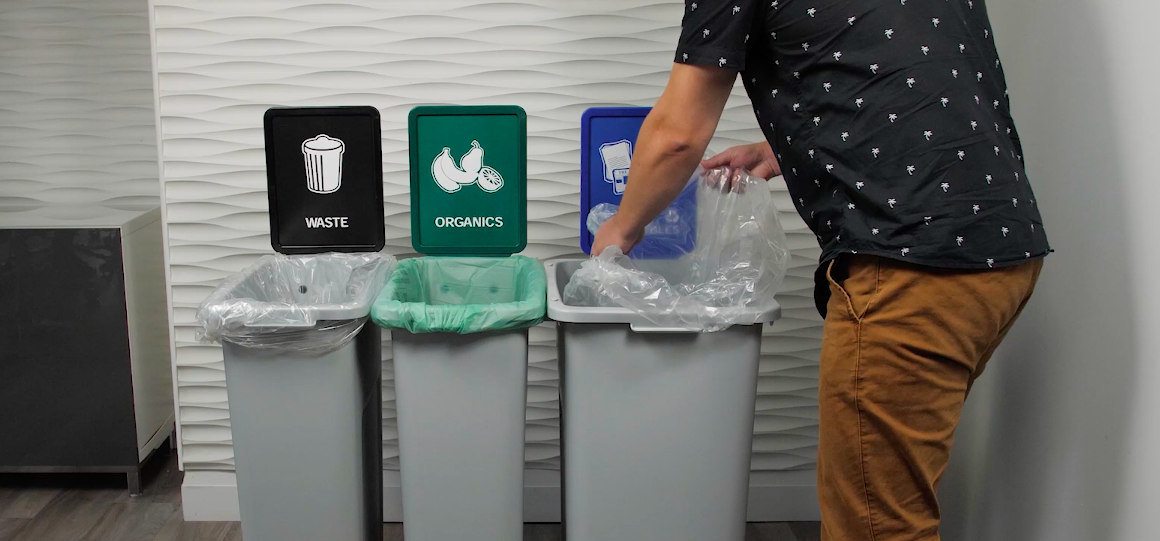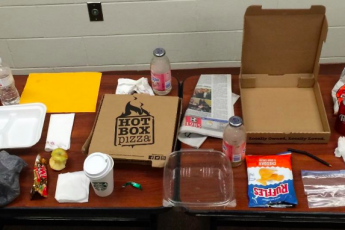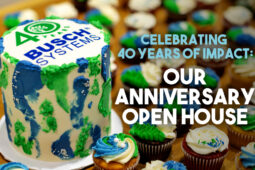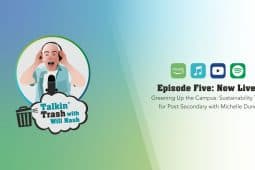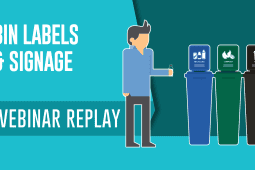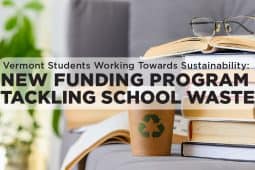8 Tips for Building an Exceptional Office Waste-Reduction Program!
For more information on how to build an exceptional recycling program for your office, click here.
Let’s start with the facts.
Corporate offices produce a lot of waste, most of which is easily recycled (in some instances, as much as 90% of office waste can actually be recycled!) with the correct program in place. By running an office recycling program, you can help ensure that the amount of garbage generated is greatly reduced, and that recyclable/reusable/compostable items are kept out of our landfills. Here are some quick stats about office waste management across the board:
- Each year, the average office worker uses 500 coffee cups, all of which are sent to landfills.
- According to the Minnesota Office of Environmental Assistance, the average office worker uses 10,000 sheets of paper each year. The U.S. EPA estimates that paper and paperboard account for almost 40 percent of our garbage.
- Office waste costs UK business £15bn (~$19mil USD)
- When you use recycled paper instead of “virgin” paper, you are contributing to saving 7,000 gallons of water per ton of paper produced. That water can be better used combating the effects of drought. You’re also offsetting the 900,000,000 trees per year chopped down to make paper.
For these reasons (and many more), it’s essential for every business to have an effective recycling program in place. An effective program focuses on reducing waste, reusing useful materials, recycling others, and ensuing every type of waste is disposed of correctly. Ineffective office collection programs tend to generate a lot of waste, require regular maintenance, and can rack up expensive waste disposal bills.
Launching an office recycling program may seem like a daunting task, but when you break it down, it really isn’t that difficult. With the help of a few co-workers, you can easily get your company’s waste-reduction program up and running in just a few weeks!
Bearing these things in mind, let’s take a look our top 8 tips for building a successful waste-reduction program in the workplace:
- Always begin with a preliminary waste audit to categorize and quantify your waste
Step one of building a successful waste management program for any industry begins with identifying and categorizing the types and quantity of waste produced by every part of your organization.
Use a map of your office space and surrounding grounds to identify key areas (i.e parking lots, cubicles, lunch rooms, private offices, meeting rooms, etc.) and begin to identify what types of waste is being generated in each area. Performing a preliminary waste audit will unearth the areas are where you’ll find a significant portion of the waste generation at your facility.
For some more quick direction, here’s an awesome infographic outlining the average worker’s waste generation produced by Roadrunner: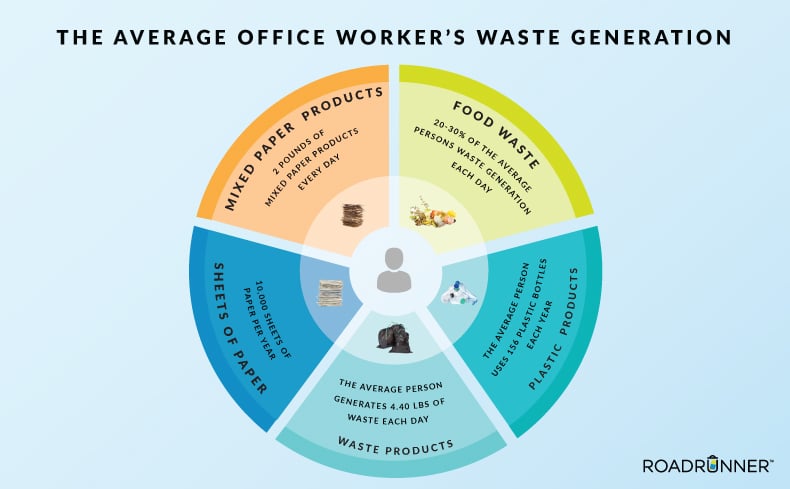
- Build a Green Team
How much time do your employees have to spare for sustainability initiatives? If the answer is less than you’d like, a designated team can be the most valuable ally in your quest for building an effective recycling program.
A ‘Green Team’ can be a small group of employees whose combined goal is to educate, empower, and inspire fellow staff and visitors about your office sustainability practices. They lead by example, and can establish and promote new initiatives and relatively small but impactful changes to day-to-day operations. Think of them as the organizers behind each full eco-focused ‘launch campaign’, and as a group of ‘influencers’ helping to build the momentum of your program.
To setup your green champions for long term success, make sure this group has formal oversight, tools for measurement and verification, and a clear schedule and mission. - COMMUNICATE!
Make sure staff, visitors, your property management – everyone! – knows about your new and existing recycling initiatives, and what they need to do to participate.
Will they need to rinse out food containers before recycling them? Is plastic wrap or film accepted? Questions like these are unique to every office recycling program, as waste haulers and townships, counties, etc all have different recycling capabilities and contracts. Consider placing posters with what is and is not accepted in each type of bin throughout the office.
In addition to that, we strongly recommend creating easy-to-understand signs for every single recycling & waste station in your building. Including pictures on signs of what items belong in each bin (or even attaching the actual items to the signs) is a great way to clarify what’s recyclable, compostable, or destined for landfill in your facility.
PSAs or other in-office announcements about recycling, posters, contests, and blurbs in company-wide emails can all help involve staff and make sure they’re disposing of materials correctly. Consider including education about your initiatives on your website, in social media, in on-boarding training sessions, and even include a section of your waste management protocols in your employee manuals.
It’s also essential to communicate with custodial/janitorial/property management team and involve them in the process from the beginning. If your janitorial staff doesn’t understand the value of your program, or the new process, they can unintentionally derail your program in a number of different ways. Involving your custodial staff at the beginning – at the design and planning stage – will also help you implement a more effective program, as they have insight into user behavior that you might not be aware of. You also want to make sure you’re not creating additional work for your staff that will drive up operational costs, so their cooperation and collaboration is essential to your waste-reduction initiatives in almost every way. - Start with small operational habit changes
The daily operation of your office provides you with an excellent testing-ground for waste reduction and management techniques. Reducing the amount of waste begins with modifying little, daily habits. Below are some examples to get your creative juices flowing – feel free to experiment, keeping hat works, and changing what doesn’t, until you have a smooth and effective system in place!
– Set the office printer to print on both sides of the paper by default.
– Use electronic communication where possible to reduce printing and faxing.
– Don’t print out emails unless absolutely necessary. Add “Think before you print” or a similar paper-use-reduction message to the bottom of email signatures as a prompt to others.
– Avoid over-production of marketing and publicity material by reviewing distribution lists and regularly updating & maintaining databases.
– Collect all paper that has been printed on one side and reuse it for printing in draft, or for scrap message pads.
– Reuse envelopes wherever possible, especially for sending information internally.
– Ensure that coffee machines allow for the use of reusable mugs rather than disposable coffee cups, and considering installing or promoting water-bottle-refill stations in bathrooms and/or as part of any existing water fountains.
– Avoid purchasing disposable catering products such as milk cartons, sugar packets, and paper plates.
– Use high-traffic areas to promote your recycling goals by adding large, attractive recycling stations with signage to promote your messaging.
– Avoid paper products other than toilet paper in the bathrooms.
– Use LED bulbs in light fixtures (this will mean fewer replacements, and much less waste, since LED bulbs last up to 10 times longer).
– Work with staff and vendors to keep disposable packages and other potential waste materials out of your venue to begin with.
– Substitute reusables for disposables everywhere possible – in kitchens, at concessions, and behind the scenes (provide branded mugs and water bottles to employees for daily use (and company promotion), switch to reusable transport packaging, supply pen refills instead of new disposable pens, provide reusable plates and metal cutlery in lunchrooms with a washing station, and so on). - Focus on organics!
Before implementing a workplace composting program, research what support might be available in your area. Ask some questions about your office environment and think through the life cycle of a single banana peel being tossed away–where does it go? Not only do you need to ensure your team has buy-in, but you also need to ensure that your organics have a destination once they’re discarded. Here’s some excellent questions to consider courtesy of Sustainable America:– Where do employees eat and throw out waste from their lunch?
– Are employees already accustomed to separating waste into trash and recyclables?
– Who empties the waste receptacles at the end of the day?
– Do you need to coordinate with the building management team or the landlord?
– Are there other businesses in the building you could team up with? (To reduce hauler costs AND potentially compete against in fun workplace challenges to see who can divert the most food waste?)
– What are your options for organic waste collection?
– If there are no hauling services, what other options do you have for using the compost your office creates? (Are there any community or school gardens nearby? Maybe you have some employees who would gladly use the compost in their own gardens, or it could be used for office plants or landscaping around your office?)Adding an organics stream to your office recycling program adds a layer of complexity, but it will make the largest difference in terms of reducing disposal costs! - Re-evaluate disposal habits with your hauler
Not long ago, waste removal was mostly built around collecting co-mingled materials and sending the waste to landfills, where it was incinerated or compacted by waste disposal companies. These days, however, your green team and facility management/custodial staff can take an active role in managing part of the process.
Before you can begin a recycling program, you’ll need to make sure your system includes a waste hauler. Larger offices may need to find an independent hauler to come in and pick up their recycling, while smaller offices may be able to utilize their municipal/township curbside hauler programs, depending on their location. In many cases, if you are already connected to one hauler, they may also offer recycling services, so reach out to them first. If your property management company is the one that manages your waste, you may need to talk with your property manager to see if they already have agreements in place with a hauler to do recycling.
Food waste is one of the largest waste streams at an office, and fortunately there’s a new crop of haulers that focus solely on organics/compost collection (often at reduced costs). If your current waste provider doesn’t provide this service, they may be able to recommend a company that does and will compliment what they already offer you. And if that’s not an option, you can always invest in food composters, or as previously mentioned, find a local garden to support instead. - Choose the right waste stations and place them appropriately
There’s a hodgepodge of factors you need to consider when purchasing containers to suit each space around your office—too many to cover in this blog! However, as a start, if you want your workplace recycling & waste program to be successful, it’s imperative that you choose containers that keep all of the collection streams together, regardless of their location across your business’ grounds.
People will always just toss all their waste in the most convenient bin—the closest one. If there is even one central waste station that does not include recycling and compost streams, people will put all their waste in the landfill-destined trash bin. This can lead to enormous amounts of contamination, which can derail your sustainability goals due to your recycling and compost often ending up in the landfill, rather than being properly sorted and disposed of separately.
Quickly, some other things to consider when choose the right recycling & waste station are:
– Placement
– Climate
– Capacity
– Signage & Label Customization Capabilities
– Restrictive Openings (to further encourage proper use of each stream)
Make sure you’ve located well-marked, easy to use recycling containers throughout your office – and make sure every time there’s a waste bin, there’s a recycling bin directly next to it, including at each employee’s desk. Some modern offices have taken this strategy even farther by creating zero-waste stations with fewer waste receptacles, instead offering more containers for recycling (and compost) collection. Inconvenient recycling containers can deter people from recycling, but if there’s a bin everywhere an employee is likely to discard their refuse, it’s hard for them to find an excuse not to recycle or compost responsibly. - Put a competitive spin on your initiatives to increase engagement
Are your employees’ recycling habits eliciting the kind of results your organization is aiming for? An office recycling competition can not only bring attention to the cause, and be an excellent excuse to re-educate everyone all at once, but it can also add a sense of community and enrich your company culture. Allowing your employees to see that issues like waste diversion are important to your organization can set a certain tone and can act as a team building exercise, bringing your employees together to work toward something non-work related. Check out this blog by a company called Vangel for more information on how to start a a fun & effective recycling ‘competition’!
Of course, once you’ve launched your office recycling program, you’ll start to see more areas for improvement, and your program can evolve and grow with your office and company. These minor or major changes will continue to increase your diversion rate and positive impact on the environment, reduce your costs, and ultimately enhance brand loyalty with your staff. Doing what’s best for your office and the environment is increasingly important. In today’s economy, having a strong recycling program can even be used as a talent acquisition tool!
Need help getting started? Contact us to chat with our Office Recycling Program Specialists for more direction on where to begin your journey to waste management greatness.
